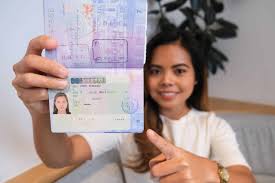Are you dreaming of strolling through the cobbled streets of Paris, savoring gelato in Rome, or exploring the historic landmarks of Athens? Traveling to Europe can be an enriching experience filled with culture, history, and unforgettable moments. However, before you can embark on your European adventure, you’ll need to navigate the process of obtaining a tourist visa if you’re a citizen of the United States. Don’t worry; we’ve got you covered with this comprehensive guide to obtaining your European tourist visa hassle-free.
Understanding the Schengen Visa:
The Schengen Area comprises 26 European countries that have abolished passport and other types of border control at their mutual borders. This means that with a Schengen visa, you can travel freely within these countries for up to 90 days within a 180-day period. Obtaining a Schengen visa is often the first step for US citizens planning to visit Europe for tourism, business, or family visits.
Step 1: Determine Where You Want to Go:
Before applying for a Schengen visa, decide which countries you plan to visit during your trip. Your visa application will need to be submitted to the embassy or consulate of the Schengen country where you will spend the most time or the first country you intend to enter if you plan to spend an equal amount of time in multiple countries.
Step 2: Check Visa Requirements:
Visit the website of the embassy or consulate of the Schengen country you’ll be applying to for the most up-to-date information on visa requirements. Generally, you’ll need the following documents:
- Completed Visa Application Form: Fill out the visa application form accurately and honestly.
- Valid Passport: Ensure your passport is valid for at least three months beyond your intended stay in the Schengen Area.
- Passport Photos: Provide recent passport-sized photos meeting the specified requirements.
- Proof of Travel Arrangements: Include flight reservations, itinerary, and accommodation bookings.
- Travel Insurance: Obtain travel insurance covering medical expenses and repatriation for at least €30,000.
- Proof of Sufficient Funds: Show evidence of financial means to cover your stay in Europe.
- Purpose of Visit: Provide a detailed explanation of your travel plans, including the places you intend to visit and activities you plan to engage in.
Step 3: Schedule an Appointment:
Most Schengen countries require applicants to schedule an appointment to submit their visa application in person. Visit the embassy or consulate’s website to schedule an appointment and gather all required documents before your appointment date.
Step 4: Attend the Visa Interview:
Attend your scheduled visa interview at the embassy or consulate. Be punctual, dress appropriately, and bring all required documents. During the interview, be prepared to answer questions about your travel plans, financial situation, and purpose of visit.
Step 5: Wait for Processing:
After submitting your visa application and attending the interview, the embassy or consulate will process your application. Processing times vary depending on the country and time of year, so be patient. You can track the status of your application online if the option is available.
Step 6: Receive Your Visa:
Once your visa application is approved, you will receive your passport with the Schengen visa affixed to it. Congratulations! You’re now ready to embark on your European adventure.
Final Tips:
- Start the visa application process well in advance of your planned travel dates to account for processing times.
- Double-check all documents to ensure they meet the embassy or consulate’s requirements.
- Be honest and transparent during the visa application process.
- If your visa application is denied, you have the right to appeal the decision or reapply with additional supporting documents.
Embarking on a European vacation is an exciting endeavor, and obtaining your tourist visa is the first step towards making your travel dreams a reality. By following this guide and adequately preparing for the visa application process, you’ll soon find yourself savoring the sights, sounds, and flavors of Europe, creating memories that will last a lifetime. Bon voyage!
Which tourist visa is best for Europe?
The best tourist visa for Europe is most likely the Schengen Visa. This visa allows you to visit any of the 26 Schengen Area countries for up to 90 days within a 180-day period. Schengen visas come in single-entry, double-entry, and multiple-entry options, so you can choose the one that best suits your travel
Here are some of the benefits of getting a Schengen Visa:
- You can visit multiple countries on a single visa.
- There are no border checks between Schengen Area countries.
- You can apply for a Schengen Visa at the embassy or consulate of any Schengen Area country.
However, it is important to note that not everyone needs a Schengen Visa to visit Europe. There are a number of countries that have visa-waiver agreements with the Schengen Area. This means that citizens of these countries can visit the Schengen Area for up to 90 days without a visa.
Conclusion
navigating the process of obtaining a tourist visa for Europe from the United States may seem daunting at first, but with proper preparation and adherence to the outlined steps, it can be a manageable and rewarding experience. Remember to research the specific requirements of the Schengen country you plan to visit, gather all necessary documents, schedule your appointment in advance, and attend your visa interview with confidence.
While waiting for your visa to be processed, use the time to fine-tune your travel plans and anticipation for the adventure that awaits you. And if you encounter any challenges along the way, don’t hesitate to reach out to the embassy or consulate for assistance.
With your Schengen visa in hand, you’ll soon be embarking on an unforgettable journey through the enchanting landscapes, rich histories, and vibrant cultures of Europe. So, take a deep breath, double-check your checklist, and get ready to embark on an experience of a lifetime. Europe is calling, and your adventure awaits!
